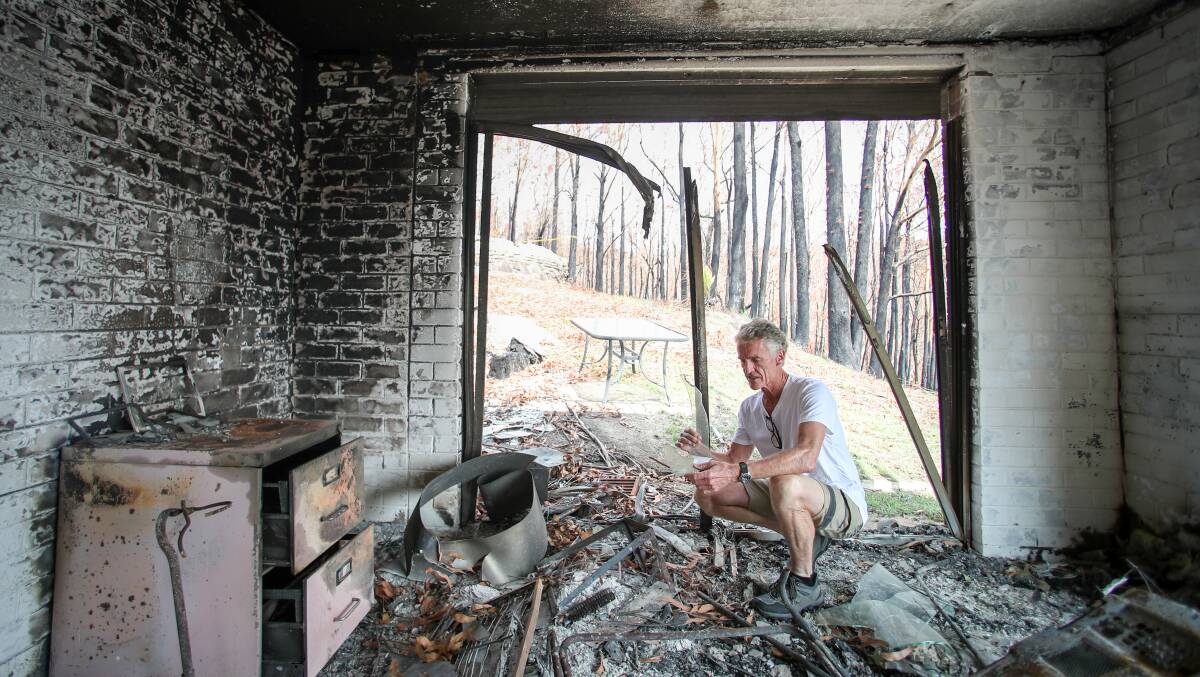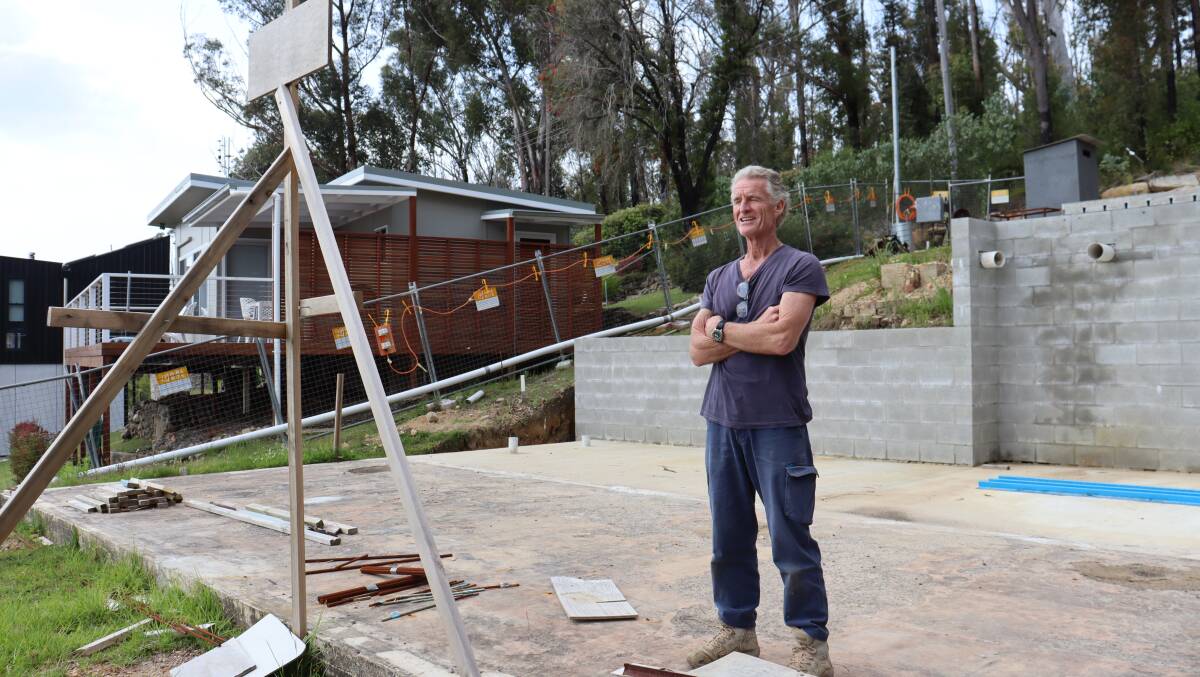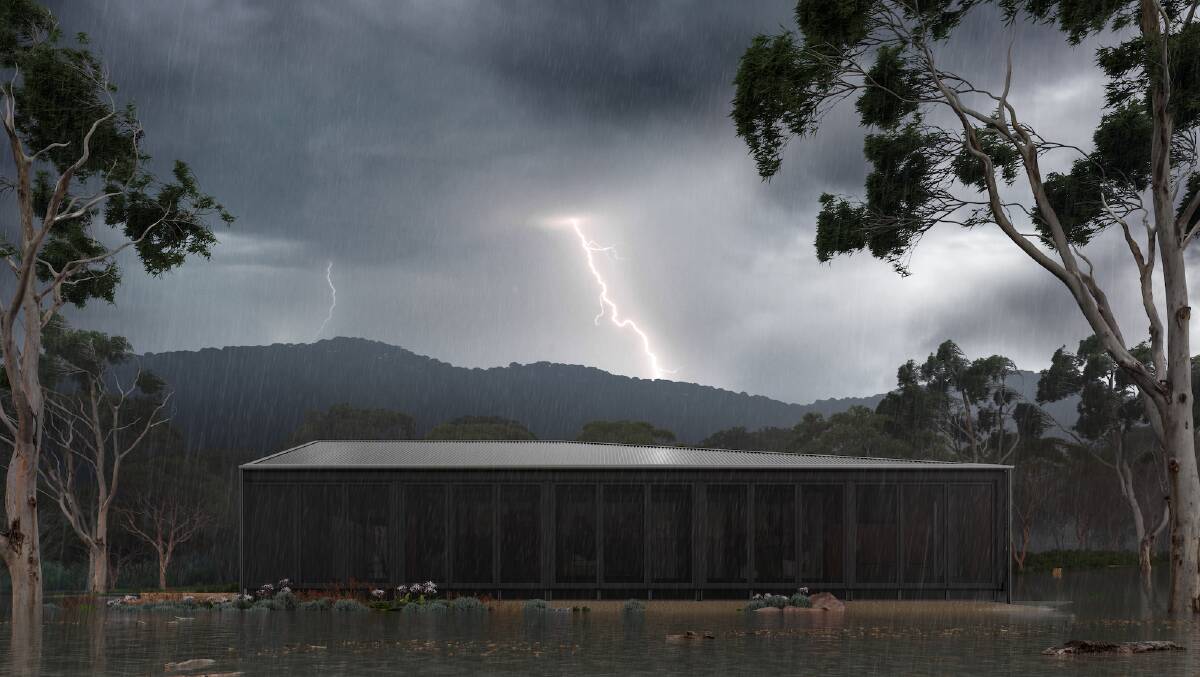
When Greg Webb returned to the remains of his home in Lake Conjola after the Black Summer fires tore through, he took note of the only things that survived: concrete, bricks and steel.
Subscribe now for unlimited access.
or signup to continue reading
Almost three years on, Mr Webb is rebuilding his bunker-like home on the NSW south coast using materials he knows will endure.
The design is based on principles championed by the Bushfire Building Council of Australia's FORTIS house, a concept developed for extreme weather, disaster resilience and sustainability in the face of climate change.
'Paint and paper' houses must go
The Black Summer fires claimed 33 lives directly and more than 3,000 homes were destroyed, the bushfire royal commission established in the wake of the disaster found.
They razed 24 million hectares of land across five states.
But the threat from bushfires and other climate change-driven extreme weather events in Australia is intensifying, a 2021 CSIRO study in Nature Communications confirmed.
The research revealed three out of four extreme forest fire years since records began 90 years ago have occurred since 2002.
Sea level rises will make storms and floods even more damaging for coastal communities, according to the NSW government.
Tropical cyclones are likely to be worse and occur further south, bringing more severe storms and rainfall events to many areas of northern NSW.
After major flooding in Lismore on the state's north coast in 2022, the State Emergency Service (SES) declared 2,046 of the town's buildings uninhabitable.
Relentless rain drenched Australia's eastern states again in October, sparking major flooding across central Victoria, inland NSW and northern Tasmania

In areas like Lake Conjola, with blackened trees that still bear the scars of fire, the way houses are built has to change, Mr Webb said.
"We cannot keep building city houses in disaster-prone areas.
"You look at project builds at the moment and they're huge, they're messy, they're just paint and paper and they're all flammable materials," he said.
"Everyone wants to build a block-type house down here in the bush but you can't."
The disaster house

The Bushfire Building Council began working on the FORTIS house when it received an influx of enquiries from NSW south coast residents following Black Summer.
People living in caravans on charred blocks of land, or forced to leave their communities altogether, wanted to know how to build more disaster-resilient homes.
Mr Webb and his wife, who moved five times in 12 months after the fires, were familiar with the uncertainty of not knowing where they'd bed down next.
"As much as people were wonderful, you'd walk into a new house, open the cutlery drawer and everything's different, the linen cupboard smells different," he said.
Building council chief executive Kate Cotter and her team were aiming for an adaptable, off-the-shelf house that could be built offsite and installed quickly using hardy design principles.

Steel mesh and hollow walls
The result was the free FORTIS house designs, backed by Shoalhaven City Council and insurance giant, the NRMA.
The designs are scaleable and adaptable to multiple disaster areas with an option to prefabricate the structure off-site in less than 12 weeks.
Ms Cotter said 2000 people had already downloaded and started using them.
The house for flood-prone areas is designed with no wall cavities, while the fire home has a steel mesh-like outer shell which protects it from embers.
One of the challenges, Ms Cotter said, was keeping costs down for people who were already under financial strain.
The designs are "modest", she said, built to be "practical and strong" rather than large, so they can still be affordable.

Project home builders need to step up
Despite rising building costs and increasing demand for disaster-resilient homes, project homes unsuited to the new climate are still popular.
National residential construction costs increased by 10% over the 12 months to June 2022, the highest annual growth rate on record outside of the introduction of the GST, according to CoreLogic's Cordell Construction Cost index.
We cannot keep building city houses in disaster-prone areas.
- Greg Webb, who is building a bushfire-resilient home on the NSW south coast
Former ACT Emergency Services Authority commissioner Peter Dunn said people who lose homes in natural disasters often prioritise quick replacements over long-term sustainability.
"The problem is that when people lose their home, and they've been through such a traumatic event, they want to get back into a new home as quickly as possible; they need a roof over their head," he said.
"When they do that, the cheapest way is to use a project home building. That's why they use gyprock, that's why they use chipboard."
Project home builders need to offer more resilient constructions, Mr Dunn said.

Homes for generations
Mr Webb, a new grandfather, said losing his home had set him on a path of learning, and planning for his - and his grandkids' - future.
He hopes his journey of "post-traumatic growth" can help change the way other Australians build houses.
"That's what I'm going through, post-traumatic growth. I'm learning and growing from it," he said.
When the new house is complete, he can finally breathe easily in the knowledge he's done what he can to protect his family and help his community when the next disaster comes.
"I can close it all up, make sure my family is safe, and go and help someone else," he said.
Rosie's story

I moved to the Gold Coast from Sydney during the Christmas of 2010. I was 11 and it rained that whole summer.
I didn't realise the enormity of the flooding event that was taking place just an hour north in Brisbane and the dozens of lives that were lost. All I knew was I'd moved to a place known for its beautiful, sunny days - and all I saw was rain.
In January this year I moved to Wollongong to start my first job as a journalist. It rained for the first three months and everyone I spoke to reassured me that the summers here "aren't usually like this".
Talking to people for this series, I realised what's considered "normal" no longer matters. Australia keeps breaking its own weather records. Weather events that are unusual or unprecedented seem to happen every month.
As a young person, I'm part of a generation inheriting a world that's fracturing as it warms. Climate change is threatening my generation's future. But the number of amazing, talented people working on innovative solutions is cause for hope.
In every region of our disaster country there's people fighting for the future.
You can read the full Young and Regional: Our Climate Future series here.


